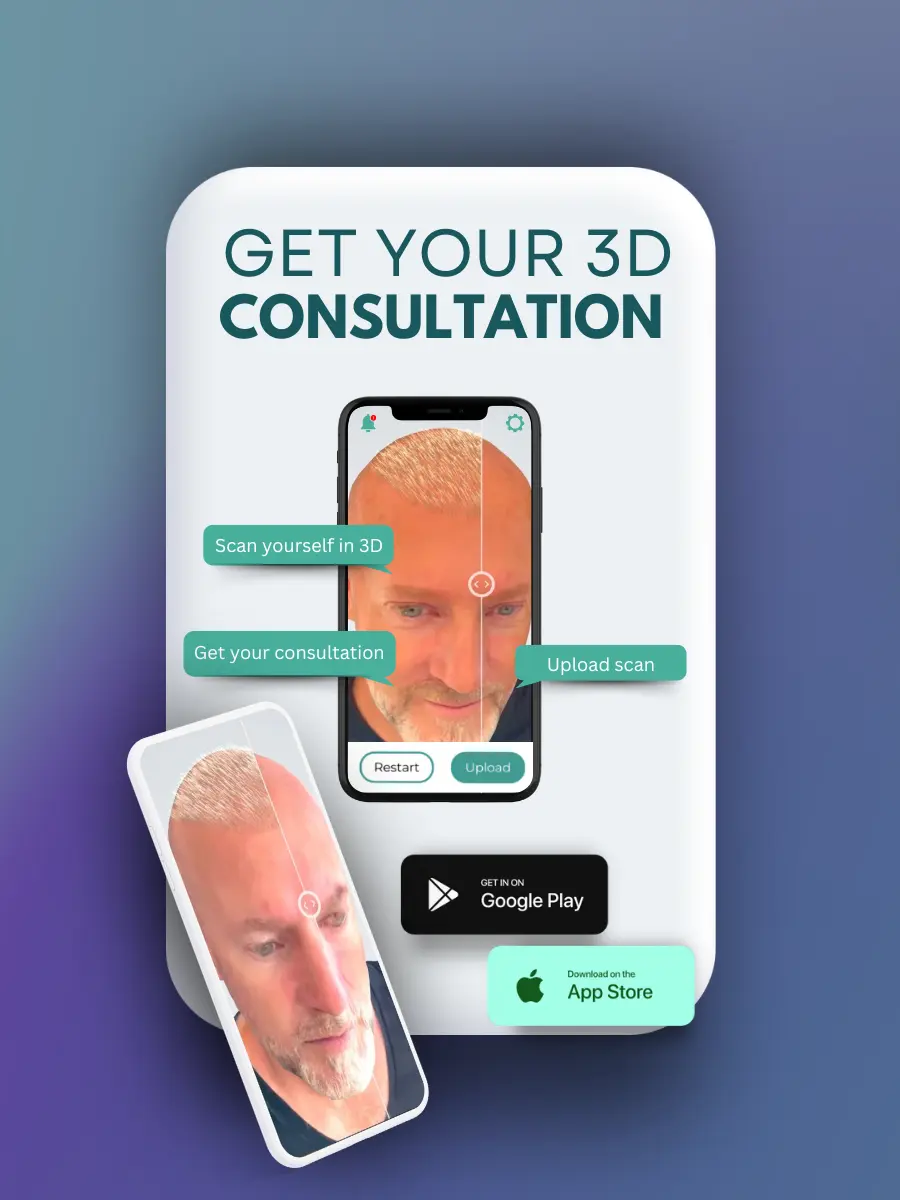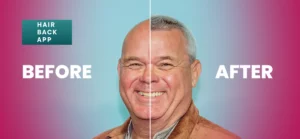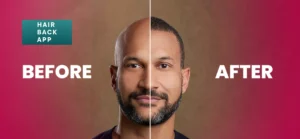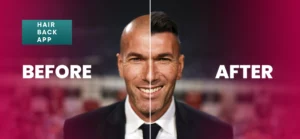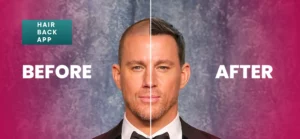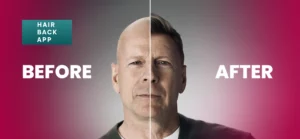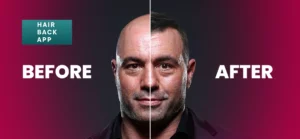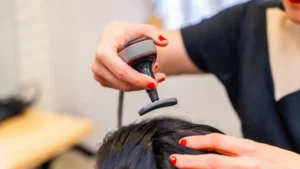The mirror reflects more than just our physical appearance, it often reflects our inner health and well-being. For many, a full head of hair symbolizes vitality, confidence, and beauty.
However, the journey towards maintaining healthy locks isn’t always smooth. Hair loss, a common concern for people of all ages and genders, comes in various forms, each with its own set of causes and treatments.
Among the myriad of hair loss conditions, non-scarring alopecia stands out as a unique category. Unlike its counterpart, scarring alopecia, which leaves permanent damage to the hair follicles, non-scarring alopecia offers a glimmer of hope for regrowth.
But what exactly is non-scarring alopecia? How does it manifest, and what can be done about it?
My name is Emma Wright, your go-to hair restoration specialist. In this comprehensive guide, we’ll delve into the depths of non-scarring alopecia, exploring its underlying causes, different types, and the array of treatment options available.
Whether you’re grappling with hair loss yourself or seeking to broaden your understanding of this common issue, join us on a journey to unravel the mysteries of non-scarring alopecia.
Non Scarring Meaning
Non-scarring alopecia refers to a type of hair loss where the hair follicles remain intact and the scalp does not show any signs of scarring or damage.
This type of hair loss can be temporary or permanent and can result from various factors such as genetics, hormonal changes, medical conditions, medications, or certain lifestyle factors.
Unlike scarring alopecia, where the hair follicles are destroyed and replaced by scar tissue, non-scarring alopecia typically allows for the possibility of hair regrowth. Non-scarring alopecia includes conditions like alopecia areata, telogen effluvium, senescent alopecia, traction alopecia, androgenetic alopecia (male or female pattern baldness), among others.
Treatment options for non-scarring alopecia depend on the underlying cause and may include medications, topical treatments, lifestyle changes, or hair transplantation in some cases.
Non-Scarring Alopecia Causes
Non-scarring alopecia, while not resulting in permanent damage to the hair follicles like scarring alopecia, can still be a distressing condition for those affected. Understanding the causes behind non-scarring alopecia is crucial for effective management and treatment.
Here are some common factors that contribute to non-scarring alopecia:
- Genetics (Androgenetic Alopecia): Hereditary factors play a significant role in non-scarring alopecia, particularly in androgenetic alopecia, also known as male or female pattern baldness. This type of alopecia is characterized by a gradual thinning of the hair on the scalp, influenced by genetic predisposition and hormonal factors.
- Hormonal Changes: Fluctuations in hormone levels can trigger non-scarring alopecia. This includes events such as pregnancy, childbirth, menopause, and hormonal imbalances associated with conditions like polycystic ovary syndrome (PCOS) or thyroid disorders. These hormonal shifts can disrupt the hair growth cycle, leading to increased shedding or thinning of hair.
- Autoimmune Disorders (Alopecia Areata): Alopecia areata is an autoimmune condition where the immune system mistakenly attacks hair follicles, resulting in sudden, patchy hair loss. While the exact cause of alopecia areata is not fully understood, it is believed to involve a combination of genetic, environmental, and immune factors.
- Stress and Trauma (Telogen Effluvium): Psychological stress, physical trauma, surgery, illness, or significant weight loss can induce a condition known as telogen effluvium. In telogen effluvium, a large number of hair follicles prematurely enter the resting (telogen) phase of the hair growth cycle, leading to excessive shedding and temporary thinning of the hair.
- Medications and Treatments: Certain medications, particularly those used in chemotherapy or radiation therapy, can cause temporary hair loss known as chemotherapy-induced alopecia. Other medications, such as some antidepressants, blood thinners, and acne medications, may also contribute to hair thinning as a side effect.
- Nutritional Deficiencies: Inadequate intake of essential nutrients, such as iron, zinc, vitamin D, and biotin, can impair hair growth and contribute to non-scarring alopecia. Malnutrition, restrictive diets, eating disorders, or conditions affecting nutrient absorption in the digestive system can all lead to nutritional deficiencies that affect hair health.
- Inflammatory Conditions: Scalp conditions characterized by inflammation, such as seborrheic dermatitis or psoriasis, can disrupt the normal hair growth cycle and contribute to non-scarring alopecia.

Non-Scarring Alopecia Symptoms
Non-scarring alopecia encompasses a variety of conditions, each with its own distinct symptoms. While the specific symptoms may vary depending on the type and severity of the alopecia, there are some common signs to be aware of.
Here are the key symptoms associated with non-scarring alopecia:
- Gradual Thinning of Hair: One of the hallmark symptoms of non-scarring alopecia, particularly androgenetic alopecia (male or female pattern baldness), is a gradual thinning of hair on the scalp. This thinning typically occurs over time and may be more noticeable in certain areas, such as the crown or temples.
- Patchy Hair Loss: In conditions like alopecia areata, non-scarring alopecia can manifest as sudden, patchy hair loss on the scalp or other hair-bearing areas of the body. These bald patches may vary in size and shape and can appear rapidly without any preceding symptoms.
- Excessive Shedding: Telogen effluvium, a type of non-scarring alopecia, is characterized by excessive shedding of hair from the scalp. Individuals experiencing telogen effluvium may notice an increased amount of hair fall during activities such as washing, brushing, or styling their hair.
- Visible Scalp: As hair becomes thinner or falls out in patches, the scalp may become more visible, particularly in areas where the hair is sparse. This can be especially noticeable in natural part lines or areas where the hair is typically styled in a certain way.
- Changes in Hair Texture or Quality: Non-scarring alopecia can also affect the texture and quality of the remaining hair. Hair may become finer, weaker, or more brittle, making it prone to breakage or damage.
- Scalp Irritation or Inflammation: Inflammatory conditions such as seborrheic dermatitis or psoriasis may accompany non-scarring alopecia and present with symptoms like redness, itching, or flaking of the scalp.
- Emotional Distress: Hair loss, regardless of the cause, can have a significant emotional impact on individuals, leading to feelings of self-consciousness, anxiety, or depression. Emotional distress related to hair loss should not be overlooked and may warrant additional support or counseling.
Is Non-Scarring Alopecia Reversible?
Whether non-scarring alopecia is reversible depends on several factors, including the underlying cause, the duration and severity of the condition, and individual response to treatment.
Here’s a breakdown:
- Temporary Conditions: Some forms of non-scarring alopecia, such as telogen effluvium, are often reversible. In telogen effluvium, hair loss is usually triggered by a specific event, such as childbirth, illness, surgery, or extreme stress. Once the underlying trigger is addressed or resolved, hair growth typically resumes, and the condition may improve within a few months.
- Alopecia Areata: While alopecia areata is an autoimmune condition that can cause patchy hair loss, it is often unpredictable in nature. In many cases, hair may regrow spontaneously without treatment. However, the extent and duration of hair regrowth can vary greatly among individuals, and some may experience recurrent episodes of hair loss.
- Androgenetic Alopecia: Androgenetic alopecia, also known as male or female pattern baldness, is a progressive condition characterized by gradual hair thinning. While the hair loss in androgenetic alopecia is typically permanent, various treatments, such as minoxidil (Rogaine) or finasteride (Propecia), may help slow down the progression of hair loss and promote modest regrowth in some individuals.
- Chronic Conditions: In some cases, non-scarring alopecia may be associated with chronic conditions such as hormonal imbalances, autoimmune disorders, or scalp inflammation. Managing the underlying condition with appropriate medical interventions or lifestyle changes may help improve hair growth, but complete reversal of hair loss may not always be achievable.
- Individual Response to Treatment: The effectiveness of treatment for non-scarring alopecia can vary from person to person. While some individuals may experience significant improvement in hair growth with treatment, others may have limited or no response. Additionally, consistency with treatment and patience are often necessary as hair regrowth can be a gradual process.
Non-Scarring Alopecia Treatment
Treatment for non-scarring alopecia varies depending on the underlying cause, the type of alopecia, and individual factors such as age, gender, and overall health.
Here are some common treatment options for non-scarring alopecia:
- Topical Medications
-
-
- Minoxidil (Rogaine): A topical medication available over-the-counter, minoxidil is approved by the FDA for the treatment of androgenetic alopecia. It is applied directly to the scalp and can help promote hair growth and prevent further hair loss.
- Corticosteroids: Topical corticosteroids may be prescribed to reduce inflammation and stimulate hair regrowth in conditions like alopecia areata or scalp inflammation.
- Anthralin: This medication is often used to treat alopecia areata and works by irritating the skin to induce an immune response that may stimulate hair growth.
-
- Oral Medications
-
-
- Finasteride (Propecia): Available in pill form, finasteride is FDA-approved for the treatment of male pattern baldness (androgenetic alopecia). It works by blocking the conversion of testosterone into dihydrotestosterone (DHT), a hormone that contributes to hair loss.
- Spironolactone: This medication, originally used as a diuretic, is sometimes prescribed off-label to treat female pattern baldness by blocking the effects of androgens on the hair follicles.
-
- Intralesional Corticosteroid Injections: For individuals with alopecia areata, corticosteroid injections directly into the bald patches can help stimulate hair regrowth by suppressing the immune response attacking the hair follicles.
- Phototherapy: Light-based therapies, such as red light therapy, excimer laser, or ultraviolet light therapy, may be used to treat alopecia areata by targeting the immune cells responsible for attacking the hair follicles.
- Platelet-Rich Plasma (PRP) Therapy: PRP therapy involves injecting platelet-rich plasma derived from the patient’s own blood into the scalp to stimulate hair growth. While research on its effectiveness is ongoing, some studies suggest it may be beneficial for certain types of alopecia.
- Hair Transplantation: In cases of advanced hair loss, hair transplantation procedures such as follicular unit transplantation (FUT) or follicular unit extraction (FUE) may be considered to transplant healthy hair follicles from donor areas to balding or thinning areas of the scalp.
- Scalp Micropigmentation (SMP): SMP is a non-invasive cosmetic procedure that involves tattooing the scalp with tiny pigment deposits to mimic the appearance of hair follicles. It can be used to create the illusion of fuller hair density in individuals with thinning hair or bald patches.
- Lifestyle Modifications: Adopting a healthy lifestyle that includes a balanced diet, regular exercise, stress management, and adequate sleep can help support overall hair health and may complement medical treatments for non-scarring alopecia.
Final Words
In conclusion, non-scarring alopecia encompasses a diverse range of conditions that can affect individuals of all ages and genders. While not as severe as scarring alopecia, non-scarring alopecia can still have a significant impact on self-esteem and quality of life.
Understanding the underlying causes, recognizing the symptoms, and exploring available treatment options are essential steps in effectively managing this condition.
From temporary conditions like telogen effluvium to chronic autoimmune disorders like alopecia areata and genetic predispositions like androgenetic alopecia, non-scarring alopecia presents a complex landscape of challenges and treatment possibilities.
Fortunately, advancements in medical science and dermatology offer a variety of interventions to address hair loss and promote healthy regrowth.
Whether through topical medications, oral treatments, injections, light therapy, hair transplantation, or lifestyle modifications, there are options available to suit individual needs and preferences.
Additionally, ongoing research and innovation continue to expand our understanding of non-scarring alopecia and refine treatment approaches for better outcomes.

